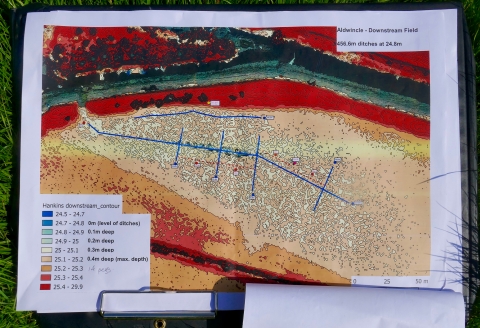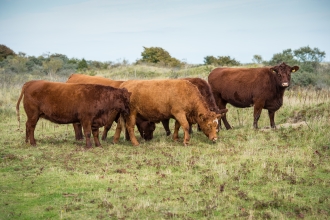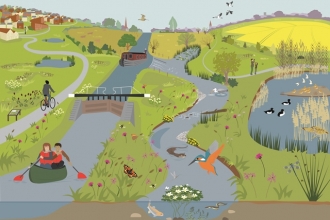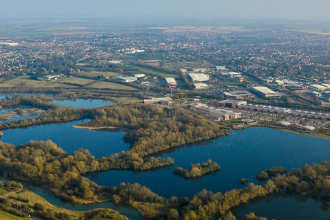A unique piece of equipment called a rotary ditcher has been busy in Northamptonshire over the past week creating swathes of channels and shallow ditches totalling more than 7km across farm land and nature reserves in the Nene Valley for breeding and overwintering wading birds. The only one of its kind in the country, the ditcher was bought from America in 2013 by the RSPB, and is now hired out for wetland conservation projects via contractors RC Baker, based in Banbury.
With the use of LIDAR mapping (an acronym of light detection and ranging: a surveying method measuring distance by illuminating the target with laser light, measuring reflected light with a sensor to build up a digital 3D representation, see below), the Trust have been planning the optimum area to create these channels for the past year.
Matt Johnson, the Trust's Living Landscape Manager for Northamptonshire said: “The rotary ditcher project has been a fantastic opportunity to work with six local farmers to create over 7km of ditches and 10 scrapes across the Nene Valley thanks to the Farming for the Future project part of the National Lottery Heritage Funded Nenescape project. The work on the ground is the conclusion of a year’s work of planning and partnership working and restores wetland features to priority breeding wader sites identified by the Trust in 2002. It's been great to see the enthusiasm for the project from both the farmers and other conservation organisations working in the valley and we are delighted with the dramatic changes to the sites. We look forward to seeing the results of the work next spring when the wetland features should be providing prime habitat encouraging waders such as lapwing and redshank (both of which have declined in the valley) to stay and breed.”

















